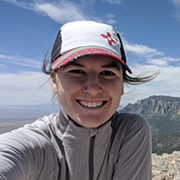A .gov website belongs to an official government organization in the United States.
A lock () or https:// means you've safely connected to the .gov website. Share sensitive information only on official, secure websites.

The climate impacts associated with solar climate intervention strategies are primarily based on global models which have known biases. Through this work we are developing capabilities for sampling stratospheric air to increase understanding of the lower stratosphere to improve our understanding of model bias and behavior in this region. This project focuses on the development of rapidly deployable, standardized instrumentation payloads that can be used to sample the lower stratosphere to establish baseline metrics and sample stratospheric perturbations. These instruments are flown and tested on Sandia's 'heliotrope' solar hot air balloon system, as well as weather balloons. The heliotrope is made up of lightweight plastic and the interior is coated with charcoal powder. The system is inflated with ambient air which is then heated by the incoming solar radiation. Once the envelope becomes positively buoyant, it is lifted to the lower stratosphere, where it floats, directed by the winds, until sunset terminates the flight. Depending on envelope size, the heliotrope can take up to a few kilograms to 18-23 km altitude. The platform has been tested extensively since 2015, racking up over 100 launches across several institutions flying instrumentation ranging from infrasound to optical particle counters with payloads in the 100s of grams to 3.6 kg range. This balloon system has enabled our team to make repeat measurements of the stratosphere and test the performance of instrumentation not originally envisioned for use in a stratospheric environment. The stratospheric observations on these flights include measures of the temperature, aerosol optical particle counts, and gas concentrations. This presentation will cover lessons learned in field campaign preparation, instrumentation development, and the results from field campaigns deployed from New Mexico. On these flights, we have sampled a horizontal range of up to 340 km and a vertical extent of 23 km for over 10 hours.
Dr. Lauren Wheeler is a Geosciences Engineer in Sandia National Laboratories Atmospheric Sciences department. Lauren received her PhD in Earth and Planetary Sciences from the University of New Mexico in 2017 and joined Sandia in the Spring of 2018. She has an interdisciplinary background in earth sciences. Throughout her career Lauren has used observations to develop and evaluate models of the solid earth, cryosphere, and atmosphere. Her technical work at Sandia includes atmospheric field work, multiscale modeling, and model-observation comparisons. Her research spans modification of dust aerosols in the DOE Energy Exascale Earth System Model (E3SM) for evaluating impacts on ice nucleation and the climate, multi-scale nested simulations in the Weather Research and Forecasting model to generate atmospheric input for Source Physics Experiment infrasound modeling, visualizing the E3SM Water Cycle simulations, and using heliotrope solar hot air balloons and to develop instrumentation to study the background aerosols and chemistry of the stratosphere for understanding the implications of proposed stratospheric climate intervention strategies.
ALL Seminar attendees agree not to cite, quote, copy, or distribute material presented without the explicit written consent of the seminar presenter. Any opinions expressed in this seminar are those of the speaker alone and do not necessarily reflect the opinions of NOAA or CSL.